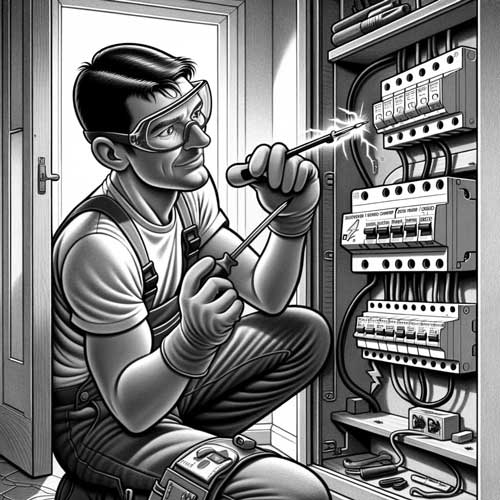Handy electric articles that are worth a read.

The Dangers and Solutions to Common Electrical Problems
DIY projects or hiring an inexperienced electrician can result in improperly installed wiring, increasing the risk of fires or malfunctions. Always hire a licensed and experienced electrician for any wiring job. If you suspect improper wiring, get a professional assessment.
Power strips are handy but can be overloaded if too many devices are plugged in simultaneously, potentially causing overheating or fires. Avoid plugging in high-wattage appliances into power strips. Always check the power strip's maximum capacity, and never daisy-chain them.

How do I know if my switchboard needs to be upgraded?
The first and foremost indication is the age of the switchboard. If your property was built over 25 years ago and the switchboard hasn't been replaced, it likely needs an upgrade. Older switchboards were not designed to handle today's electrical load and might not comply with NSW regulations.
Homes with ceramic fuses need to be updated. Modern circuit breakers and safety switches offer much better protection against electrical faults. If your switchboard still uses ceramic fuses, it's a clear sign to upgrade.

RCD's the lifesaving device every home should have.
In electrical safety, few innovations have had as profound an impact as the Residual Current Device (RCD). A protective measure that's as silent as it is effective, the RCD is a critical component of modern electrical installations. But what exactly is an RCD, and why is it such an essential device in your home? Let's dive in.
An RCD, a safety switch, is an electrical safety device that instantaneously breaks an electric circuit to prevent grave harm from an ongoing electric shock. It continuously monitors the electric current flowing through one or more circuits it protects.

Types of circuit breakers. What you need to know.
Circuit breakers play a pivotal role in the safety of electrical systems in homes, businesses, and industries. These devices are designed to automatically interrupt the current flow in the event of an overload or short circuit, protecting people and property from electrical mishaps.
In Australia, where electrical safety standards are stringent, it's essential to understand the different types of circuit breakers available and their specific functions. Let's explore three primary types you need to know.

10 most common electrical problems in your home.
Homeowners often face various electrical issues in their homes, and some of these can pose serious risks if left unattended. Awareness of these common problems is crucial to ensure safety and timely intervention. Below, we outline the ten most common electrical issues in homes:
When your circuit breaker frequently trips, it indicates an overloaded circuit. This means the circuit carries more electrical current than it can safely handle. Items like hairdryers, microwaves, and space heaters can overload circuits if operated simultaneously on the same circuit.

Electrical things to check before buying a house.
Buying a home is one of the most significant investments one can make. Beyond the property's aesthetic appeal and structural integrity, ensuring the electrical components are safe and up-to-date is vital.
Overlooking the electrical components can lead to safety concerns, unexpected repair costs, and potential inconveniences.
Here's a guide on some electrical things to inspect before sealing the deal on a new home.
